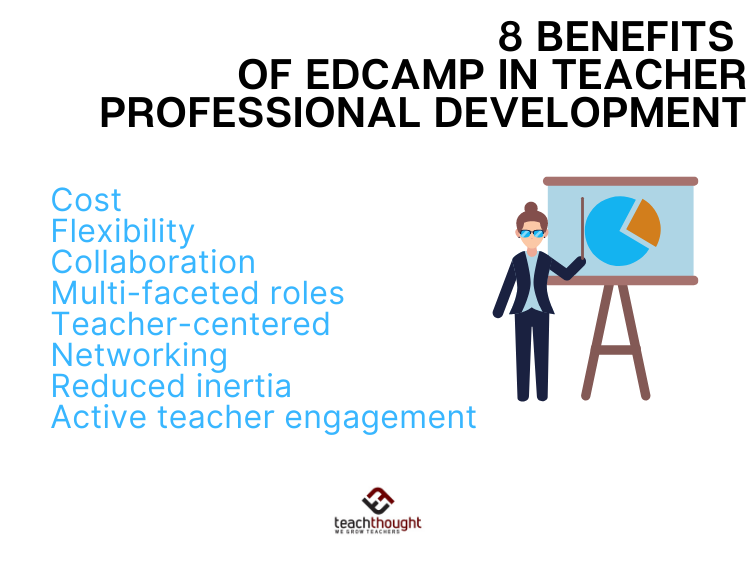
8 Benefits Of Edcamp In Teacher Professional Development
by TeachThought Staff
Choosing the best professional development for your school depends on what your school needs to grow.
What are your strengths?
What are your goals? How clear and useful and transparent are those goals? Whose goals are they exactly?
What resources do you currently have?
What is your school’s history–both long-term and recent?
And so on.
Answering these kinds of questions can help you clarify your school’s mission and status and working backward from that, choose professional development that grows your teachers and supports your students. Add in COVID-19 and its widespread impact on–well, everything–and PD for teachers gets even more complicated.
While Edcamp is generally thought of as in-person, in What Is Edcamp?, we said that Edcamp is “a low-cost, ‘bottom-up’ approach to teacher improvement where ‘conference’ participants gather, decide what’s going to be learned, then set out to teach one another in a laid-back, communal approach of sessions.”
This means that this approach can translate to digital learning spaces as well. More on that in another post. For now, let’s take a very quick look at some of the perceived benefits of Edcamp for teachers.
8 Benefits Of Edcamp In Teacher Professional Development
Compared to more common forms of teacher professional development, the perceived benefits of Edcamp include:
1. Low-cost
Edcamps are sometimes free, other times more expensive. This depends on your specific Edcamp event but in general, they are less expensive than larger-scale training.
2. Flexibility
Edcamps can be half-day or full-day or last an entire weekend or more.
3. Communal and collaborative
Because teachers work together to identify topics and plan sessions, not to mention actually deliver the sessions, the result of an Edcamp event can be vested and sustained collaboration.
4. Engagement
Not only can everyone can contribute in an Edcamp event, it can be difficult to attend one without being involved in some level.
5. Teacher-centered approach
Further, because topics and even format are largely flexible in Edcamp, the result is peers talking to one another and supporting one another through language and terms that feel ‘teacher-centered’ versus institutionally-focused.
6. Networking potential
Instead of merely sitting beside, participants in Edcamp can both teach and be ‘taught to.’ As mentioned above, this results in more meaningful networking potential compared to ‘talking/elbow partners’ in larger events.
7. Reduced ‘inertia’ in planning and executing
Because Edcamps are teacher-focused and require fewer resources to host, they generally require less planning and funding to execute.
8. Active teacher participation and engagement by design
With Edcamp (and any other teacher-driven PD), there is at least the potential (though no guarantee) for improved teacher capacity from both giving and ‘receiving’ training.
Just as it can benefit both students when one student explains a concept to another, perhaps the biggest benefit of Edcamp is the effect of having teachers break down the most important elements of pedagogical principles while teaching them to a small room full of other teachers.